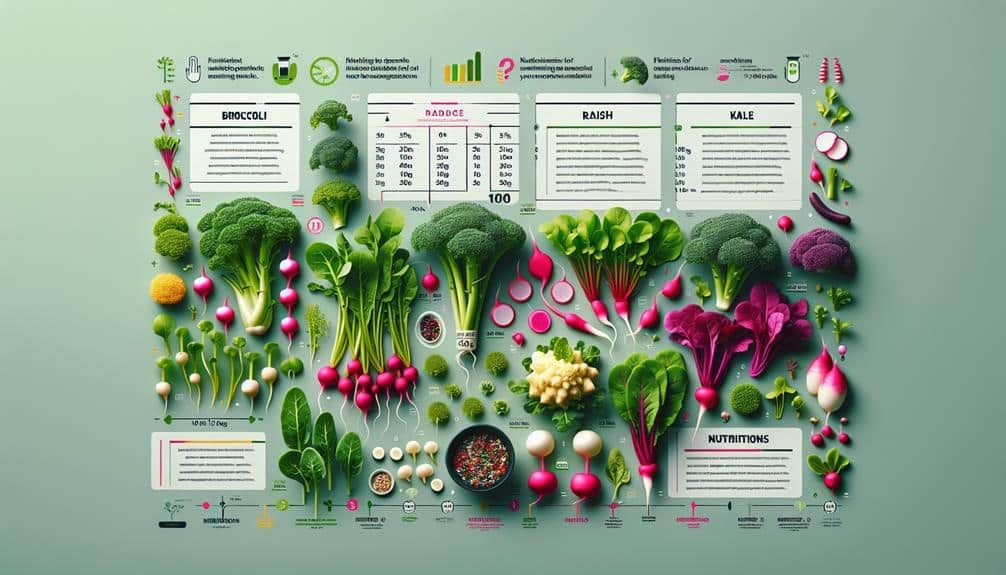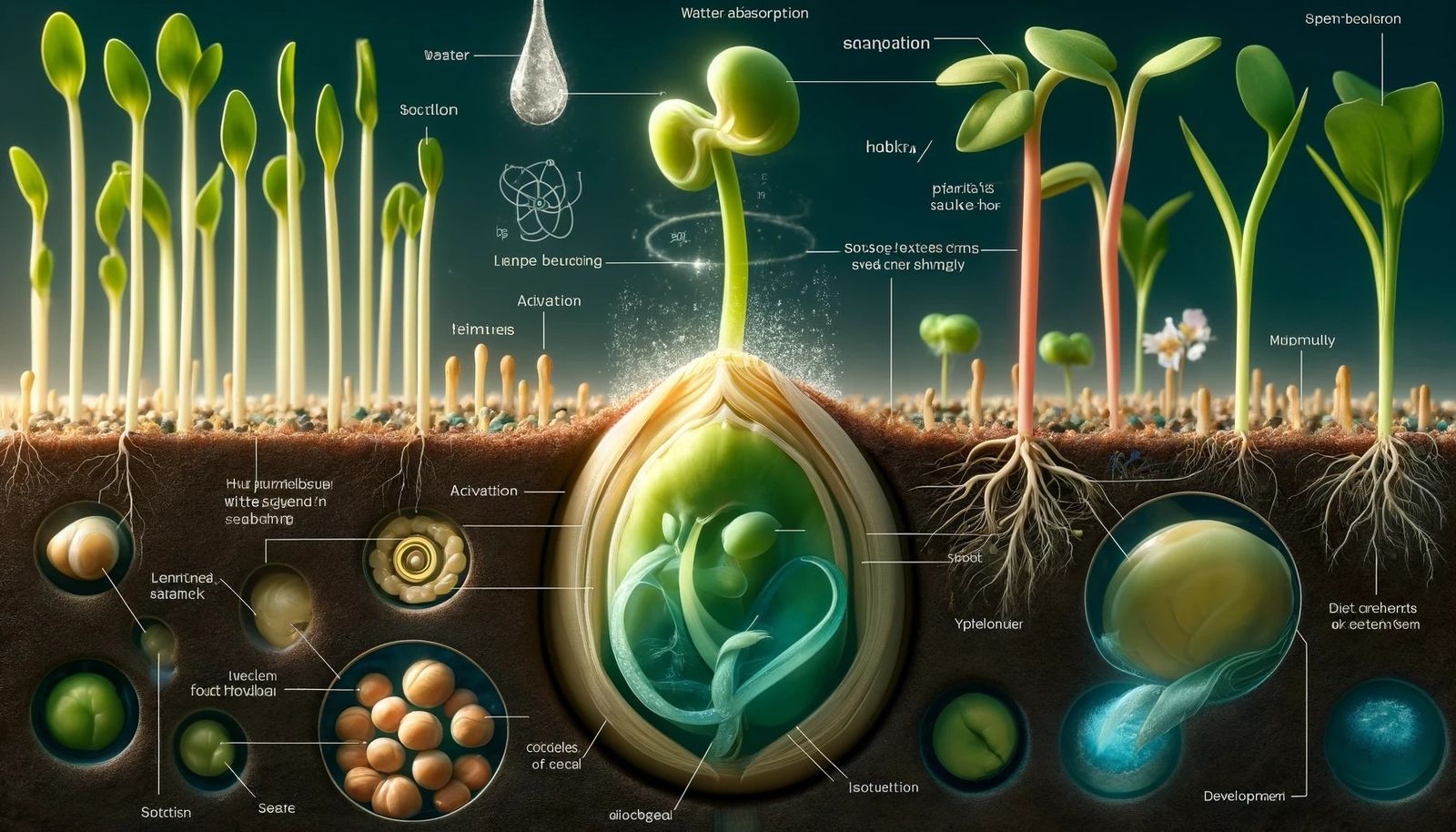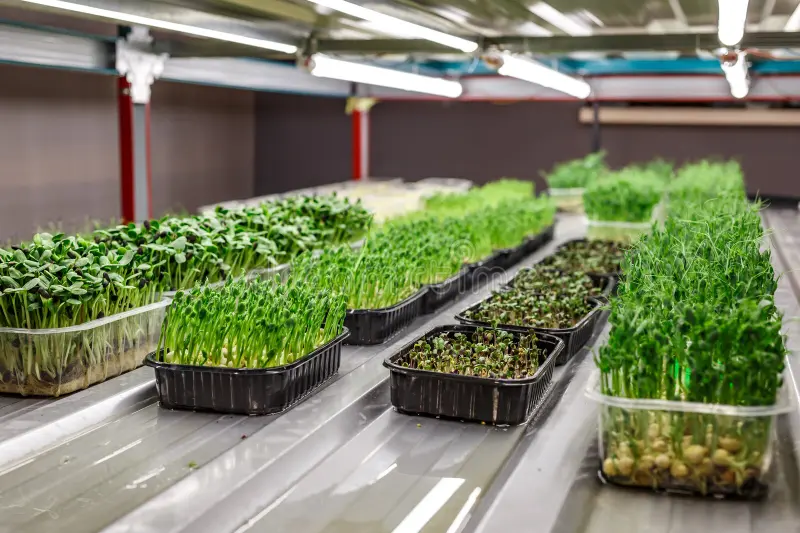The health benefits of microgreens are nothing short of remarkable. These tiny, nutrient-dense plants have captured the attention of nutritionists, chefs, and health enthusiasts worldwide – and for good reason. Research shows that microgreens can contain up to 40 times more vitamins, minerals, and antioxidants than their mature counterparts, making them one of nature’s most concentrated sources of nutrition.
Whether you’re looking to boost your immune system, manage diabetes, protect your heart, or simply add more nutrients to your daily diet, understanding what microgreens are and how they can benefit your health is essential knowledge for anyone serious about optimal nutrition.
Quick Facts About Microgreens
- 4-40x more nutrients than mature vegetables
- Ready to harvest in just 7-21 days
- Can be grown year-round indoors
- Safer than sprouts with lower contamination risk
- Over 100 varieties to choose from
What Are Microgreens? Understanding These Nutritional Powerhouses
What is a micro green? Microgreens are young, edible seedlings of vegetables, herbs, and grains that are harvested 7-21 days after germination, right when their first true leaves appear. These tiny plants fall somewhere between sprouts and baby greens in their development cycle.
Unlike sprouts, which are grown in water and harvested before leaves develop, microgreens are grown in soil or growing medium with proper lighting, allowing them to develop chlorophyll and concentrate nutrients through photosynthesis.

Microgreens vs. Sprouts vs. Baby Greens
| Aspect | Sprouts | Microgreens | Baby Greens |
|---|---|---|---|
| Growth Time | 2-7 days | 7-21 days | 30-45 days |
| Growing Medium | Water only | Soil/Growing medium | Soil |
| Light Required | No | Yes | Yes |
| Safety Level | Lower | Higher | Highest |
Nutrients in Microgreens: The Science Behind the Superfood Claims
Research from the University of Maryland and other institutions has consistently shown that nutrients in microgreens are significantly more concentrated than in mature vegetables. Let’s break down exactly what makes these tiny plants so nutritionally powerful.

Key Nutritional Highlights:
- Vitamin C: Up to 50mg per serving
- Vitamin E: 35mg in sunflower microgreens
- Vitamin K: 47mg in pea shoots
- Folate: Essential for cell division
- Iron: Highest in fenugreek microgreens
Mineral Content Comparison
Research shows microgreens contain these essential minerals in concentrated amounts:
K
Potassium
Fe
Iron
Zn
Zinc
Mg
Magnesium
The 6 Evidence-Based Health Benefits of Eating Microgreens
The health benefits of eating microgreens are backed by scientific research and clinical studies. Here’s what the evidence tells us about how these nutrient-dense plants can improve your health.
1. Cardiovascular Health Protection
Studies show that microgreens, particularly red cabbage varieties, can significantly reduce risk factors for heart disease. Research demonstrates that adding microgreens to a high-fat diet can lower triglycerides and LDL (bad) cholesterol levels.
Key Research Finding: Red cabbage microgreens reduced body weight, triglycerides, and LDL cholesterol in laboratory studies, making them powerful allies for heart health.
2. Blood Sugar Control and Diabetes Management
Microgreens show remarkable potential for managing Type 2 diabetes. Broccoli microgreens improve insulin resistance, while fenugreek microgreens can enhance cellular sugar uptake by 25-44%.
Clinical Evidence: Fenugreek microgreens demonstrated a 25-44% improvement in cellular glucose uptake, offering natural support for blood sugar management.
3. Cancer Prevention Properties
Brassicaceae microgreens (broccoli, cabbage, radish) contain high levels of sulforaphane, a powerful compound with proven cancer-fighting properties. Research suggests these microgreens may help prevent, block, or reverse cancer growth.
Research Highlight: Brassicaceae microgreens show particular promise in preventing colon cancer and supporting the body’s natural defense mechanisms against malignant cell growth.
4. Enhanced Cognitive Function and Brain Health
The high polyphenol content in microgreens supports brain health and cognitive function. Scientific evidence suggests these compounds may improve thinking, reasoning abilities, and potentially delay neurodegenerative diseases like Alzheimer’s.
Neurological Benefits: Polyphenols in microgreens cross the blood-brain barrier and provide neuroprotective effects, supporting long-term brain health and cognitive function.
5. Vision Protection and Eye Health
Lutein-rich microgreens like spinach, broccoli, and dandelion varieties provide powerful protection for eye health. This antioxidant is particularly beneficial for preventing age-related macular degeneration in older adults.
Vision Research: Studies demonstrate that lutein from microgreens can improve or prevent age-related macular disease, making them essential for long-term eye health.
6. Iron Deficiency and Anemia Prevention
Many microgreens, especially fenugreek varieties, are exceptionally rich in bioavailable iron. This makes them valuable for preventing iron deficiency anemia, the world’s most common nutritional deficiency.
Iron Content: Fenugreek microgreens contain the highest levels of bioavailable iron among all microgreen varieties, making them ideal for individuals at risk of anemia.
Health Benefits of Popular Microgreen Varieties
Different microgreen varieties offer unique nutritional profiles and health benefits. Let’s explore the specific advantages of the most popular and nutritious varieties.
Health Benefits of Broccoli Microgreens

- Sulforaphane: Up to 100x more than mature broccoli
- Vitamin C: 50mg per serving
- Cancer prevention: Particularly effective against colon cancer
- Detoxification: Supports liver function
Health Benefits of Arugula Microgreens
- Nitrates: Support cardiovascular health
- Vitamin K: Essential for bone health
- Folate: Crucial for DNA synthesis
- Antioxidants: Protection against oxidative stress
Health Benefits of Chia Microgreens
- Omega-3 fatty acids: Heart-healthy fats
- Calcium: Bone and teeth health
- Fiber: Digestive health support
- Protein: Complete amino acid profile
Sunflower Microgreens Benefits
- Vitamin E: 35mg per serving
- Protein: All essential amino acids
- Folate: Cell division and growth
- Selenium: Antioxidant enzyme cofactor
How to Grow Microgreens at Home: Step-by-Step Guide
Growing your own microgreens is surprisingly easy and cost-effective. Here’s a comprehensive guide to get you started with your first microgreens harvest in just 7-14 days.
Visual Growth Timeline

Days 1-3: Germination
Seeds soak, sprout, and begin initial growth

Days 4-7: Growth
First true leaves appear, plants gain height

Days 7-14: Harvest
Ready to harvest and enjoy!
Essential Equipment You’ll Need:
- Growing trays: 10×20 inch standard size
- Growing medium: Potting soil or coconut coir
- Seeds: High-quality microgreen seeds
- Spray bottle: For gentle watering
- LED grow light: If growing indoors
- Sharp scissors: For harvesting
Step 1: Prepare Your Tray
Fill your growing tray with 1-2 inches of moistened potting soil or growing medium. Level the surface but don’t compress it too tightly.
Pro Tip: Pre-moisten your growing medium to prevent seeds from washing away during initial watering.
Step 2: Seed Distribution
Sprinkle seeds evenly across the surface. For most varieties, aim for dense coverage without overcrowding – seeds should barely touch each other.
Seeding Rates: Use approximately 1-2 tablespoons of seeds per 10×20 inch tray, depending on seed size.
Step 3: Initial Watering and Covering
Mist seeds gently with water and cover with another tray or plastic dome to create humid conditions for germination.
Germination Phase: Keep in darkness for 2-4 days at room temperature (65-75°F).
Step 4: Light Exposure
Once seeds have sprouted (2-4 days), remove the cover and place under indirect sunlight or LED grow lights for 12-16 hours daily.
Step 5: Daily Care and Watering
Water daily with a gentle mist, keeping soil moist but not waterlogged. Watch for the development of the first true leaves.
Step 6: Harvest Time
Harvest when microgreens are 1-3 inches tall with well-developed cotyledon leaves and first true leaves (typically 7-21 days).
Harvesting Method: Cut with clean scissors just above soil level. Rinse gently and store in refrigerator for up to one week.
Adapting to Different Growing Conditions
Successfully growing microgreens year-round requires understanding how to adapt to various environmental conditions. Here’s how to handle common challenges and optimize growing conditions in different climates.
Hot Climate Growing
- Temperature Control: Keep growing area below 75°F using fans or air conditioning
- Increased Watering: Water more frequently but avoid overwatering
- Shade Cloth: Use 30-50% shade cloth to prevent overheating
- Indoor Growing: Consider moving operations indoors during extreme heat
Cold Climate Growing
- Heating Mats: Use seed starting heat mats to maintain 65-70°F
- Extended Germination: Allow extra time for germination in cold conditions
- Insulation: Insulate growing area to retain heat
- LED Lights: Supplement with grow lights during short winter days
High Humidity Areas
- Air Circulation: Use fans to prevent mold and fungal issues
- Reduced Watering: Water less frequently to prevent oversaturation
- Spacing: Provide more space between trays for airflow
- Monitoring: Watch closely for signs of mold or damping-off disease
Dry Climate Growing
- Humidity Domes: Use clear plastic covers to maintain moisture
- Frequent Misting: Increase watering frequency with lighter applications
- Mulching: Use vermiculite as a light mulch to retain moisture
- Humidity Trays: Place water trays near growing area to increase humidity
How to Use Microgreens: Culinary Applications and Serving Ideas
Understanding how to use microgreens effectively allows you to maximize their nutritional benefits while adding incredible flavor and visual appeal to your meals. Here are proven ways to incorporate them into your daily diet.
Raw Applications (Maximum Nutrition)
- Salad Toppers: Add 1-2 cups to mixed greens
- Sandwich Fillings: Layer in wraps and sandwiches
- Smoothie Boosts: Blend into green smoothies
- Garnishes: Top soups, omelets, and dishes
Cooked Applications (Light Cooking)
- Pizza Toppings: Add after baking for fresh flavor
- Stir-fry Finish: Stir in during last 30 seconds
- Protein Pairing: Serve alongside grilled meats
- Pestos & Sauces: Blend into homemade sauces
Daily Serving Recommendations
1-2
Cups per day
General health
2-3
Servings per day
Therapeutic use
1.5-2
Tablespoons per meal
Per serving
Safety, Storage, and Daily Consumption Guidelines
Food Safety Best Practices
- Source Quality: Buy seeds from reputable suppliers certified for microgreen production
- Clean Environment: Sanitize all equipment and maintain clean growing conditions
- Proper Drainage: Ensure adequate drainage to prevent bacterial growth
- Gentle Washing: Rinse microgreens gently before consumption
Storage and Freshness
- Refrigeration: Store at 32-40°F in perforated containers
- Shelf Life: Consume within 7-10 days for optimal nutrition
- Moisture Control: Keep slightly moist but not wet to prevent spoilage
- Quality Check: Discard if showing signs of yellowing or decay
Are Microgreens Safe to Eat Daily?
Yes, microgreens are generally safe for daily consumption and offer significant health benefits when eaten regularly. Unlike sprouts, which have a higher contamination risk, microgreens are grown in controlled conditions with lower moisture requirements, making them inherently safer.
Important Note: Start with small amounts (1/4 to 1/2 cup daily) and gradually increase to allow your digestive system to adjust to the increased fiber and nutrient intake.
Frequently Asked Questions About Microgreens Health Benefits
What are the main health benefits of microgreens?
The health benefits of microgreens include cardiovascular protection, blood sugar management, cancer prevention, enhanced brain function, improved eye health, and anemia prevention. Research shows they contain 4-40 times more nutrients than mature vegetables, making them exceptionally beneficial for overall health.
Are microgreens safe to eat daily, and how much should I consume?
Yes, microgreens are safe for daily consumption. The recommended serving size is 1-2 cups per day for general health benefits. Start with smaller amounts (1/4 cup) and gradually increase. They’re safer than sprouts due to their growing method and lower contamination risk.
What’s the difference between microgreens and sprouts?
Microgreens are grown in soil with sunlight for 7-21 days and have developed leaves, while sprouts are grown in water for 2-7 days without soil or sunlight. Microgreens are generally safer, more nutritious, and have lower contamination risks compared to sprouts.
Which microgreens have the highest nutritional value?
Broccoli and red cabbage microgreens are considered among the most nutritious, containing high levels of sulforaphane, vitamin C, and antioxidants. Sunflower microgreens provide exceptional vitamin E content, while fenugreek microgreens offer the highest iron levels.
Can microgreens help with diabetes management?
Research indicates that certain microgreens, particularly broccoli and fenugreek varieties, can help manage Type 2 diabetes. Studies show they can improve insulin resistance and enhance cellular sugar uptake by 25-44%, making them beneficial for blood sugar control.
How long does it take to grow microgreens at home?
Most microgreens are ready to harvest in 7-21 days, depending on the variety. Fast-growing varieties like radish and cress can be ready in 7-10 days, while slower varieties like sunflower and pea shoots may take 14-21 days to reach optimal harvest size.
What’s the best way to store microgreens for maximum nutrition?
Store microgreens in the refrigerator at 32-40°F in perforated containers or plastic bags with small holes. Keep them slightly moist but not wet, and consume within 7-10 days for optimal nutritional value. Avoid washing until ready to eat to prevent spoilage.
Transform Your Health with Microgreens Today
The evidence is clear: the health benefits of microgreens are substantial and scientifically validated. These nutrient-dense superfoods offer a simple, cost-effective way to dramatically improve your nutritional intake and support long-term health goals.
Key Takeaways:
- 4-40x more nutrients than mature vegetables
- Support heart health, diabetes management, and cancer prevention
- Easy to grow at home year-round
- Safe for daily consumption
- Multiple varieties offer different health benefits
Next Steps:
- Start with 2-3 easy varieties like broccoli or radish
- Invest in basic growing equipment
- Begin with 1/4 cup daily servings
- Track your health improvements over time
- Share your experience with others
Ready to Experience the Health Benefits of Microgreens?
Start your microgreens journey today and discover how these tiny nutritional powerhouses can transform your health, energy levels, and overall well-being. Your body will thank you for making this simple yet powerful addition to your daily routine.